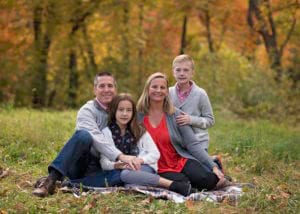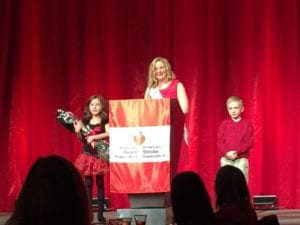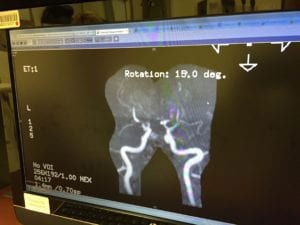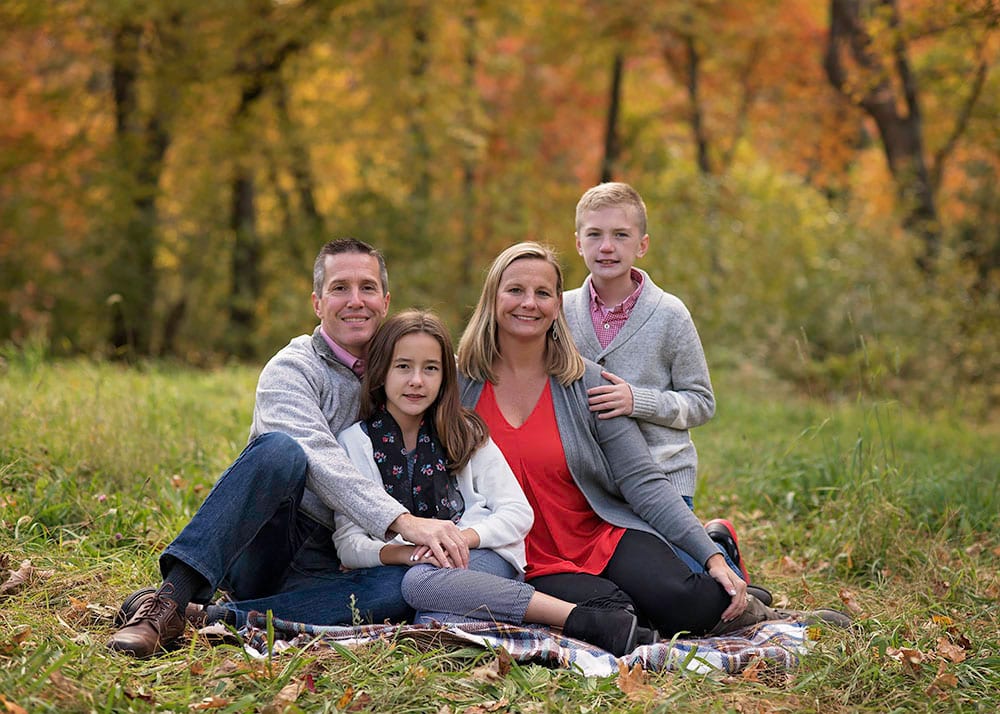At age twenty one, Lisa was about to graduate college and had a promising future career in front of her. All that was left was graduation itself.
The week before graduation something felt wrong. Lisa had a severe headache and numbness throughout the left side of her body. She went to one hospital and was sent right back home. She was told it was just stress.
Lisa knew that couldn’t be it. Several days later she went to a different hospital. They told her that, as young as she was, she had suffered a stroke.
Reeling from the news, Lisa was kept in the hospital as they treated her symptoms. She hadn’t known stroke could happen to someone in their twenties.
After a week, she was discharged so that she could attend her graduation ceremony. She doesn’t remember most of it.
She underwent further testing at the hospital, but no one could figure out why she had had a stroke. Eventually, they sent her home.
Six months later, Lisa felt the now familiar symptoms beginning again. She called her neurologist and he told her to go to the ER. She had just started her first job. It was her very first ever day of client work and she thought to herself “this can’t be happening again.” She left her belongings and met her doctor in the emergency room. She was admitted to the hospital for three weeks. She was twenty two.
Lisa was diagnosed with Vasculitis of the Central Nervous System and was put through a rigorous treatment plan. She began chemotherapy, blood thinners, and prednisone. The treatments and all their side effects became her reality for the next three years. She was still trying to work but the medications were wearing her down.
Then, stroke number three occurred. She began the road to recovery once more, slowly regaining physical abilities, but plagued by fatigue and numbness on her left side if she overexerted herself.

Despite all of this, she was told that she was in remission.
She got married and she and her husband grew their family into a family of four.
It was incredibly difficult for her to give up the career she had originally pursued, but she committed herself to volunteering and dedicated a lot of her time to the American Heart Association.
The volunteer work allowed her to move at her  own pace. She could work full days, but not five in a row as would be necessary for full time employment.
own pace. She could work full days, but not five in a row as would be necessary for full time employment.
She became an American Heart Association spokesperson in 2014 and spread her message:
“Stroke can happen to anybody. You need to be aware of the signs and symptoms and if you take action quickly, you can stop the negative effects.” – Lisa
In 2015 she felt her left side going numb again and assumed it was the residual effects of her earlier strokes. Three days later, however, she hadn’t regained feeling and thought maybe she should get it checked out. She drove herself to the hospital confused but not too worried, she was still on blood thinners, after all.
She was shocked to learn she had suffered a fourth stroke.

A week later, she went back for an angiogram. This time she was instructed to see a specific nuero-interventional radiologist and was told to bring the films of MRIs she had had in the past.
The new doctor reviewed the films as she was prepped for the angiogram. She was nervous. The doctor walked over to her and said, “I don’t think you have vasculitis. I think you have Moyamoya Disease.” And proceeded to start the angiogram procedure.
As the medication tugged at her consciousness and she started to succumb to it she looked over to the clock on the wall and thought “In this moment, I should be freaking out but, even if my initial diagnosis was wrong, my life is good now and it would have been different. My kids would have been different.” She couldn’t imagine that.
As she came to and the doctor came into focus, he told her she did, in fact, have Moyamoya Disease. He had done his residency at the Stanford Moyamoya center and was able to recognize it.
It was a shocking moment for Lisa. She had heard of Moyamoya before in passing, but she didn’t know what it meant. The doctor told her there was no cure, but that surgery could improve things.
Over the next two weeks she met with several neurologists and neurosurgeons. She was a candidate for surgery on both side of her brain.
She began to mentally prepare for surgery.

She was going to have brain surgery just a month after learning that all this time she had a different condition that she thought she did. She had two children in elementary school and would have to relocate to the other side of the country for a month for the procedures.
Success rates weren’t terribly high for the surgery so she felt most comfortable going to the Stanford Moymoya Center which had better success rates. The neurosurgeon there had years of experience.
Her husband and her mother were going to make the trip with her. She worried how they could keep life the same for their children while they were gone.






